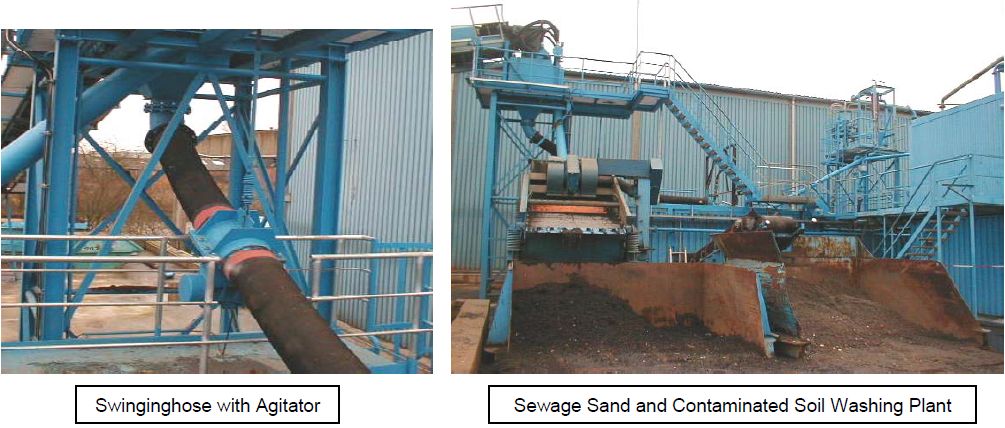History of Development
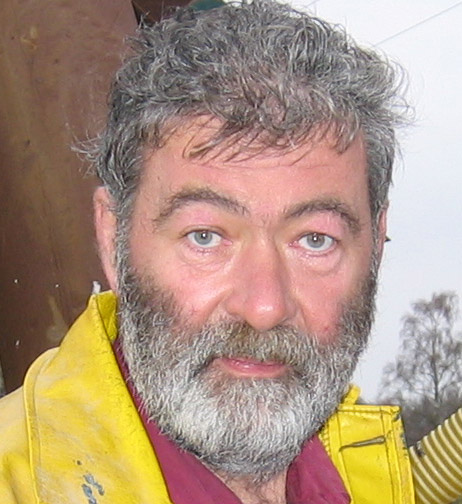
Since 1989, Michael Braeumer was in the wet-processing technology (sand and gravel washing, floor washing and dewatering) and in 1998 founded his own company mbb.
Today ondae separation is distributing these technologies.
In 2000 the construction of the machine mbb 1 began. mbb 1 is a laboratory setting machine for testing of material into the processing equipment.
The purposes of the developed machines are:
• Separation of wood and coal to the solid density of 1,55 of sand and grit
• Separation of slag remnants of fine iron
• Separation of light material from construction waste
• Separation of tantalum from shredded plastics, aluminum and carbon
• Separation of shredder fine fraction in plastics, mineral, metal
• Treatment of incinerator ash
mbb1
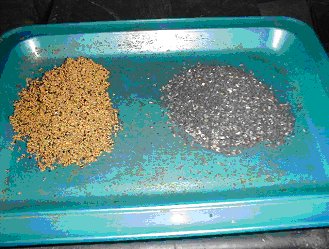
Overflow: Plastics, Carbon, Aluminium / Underflow: Tantalum
With this machine several separation tests were made:
• Separating organics like wood and coal up to a raw density of 1,6 mm out of sand and gravel • Separating slag out of fine iron which was rewon with a magnet separator out of slag • Separating shreddered condensators to rewin tantalum • Separating shredder fine fraction, overflow: rubber, plastics, wood / underflow: metals, stones, glass, ceramics
mbb 2
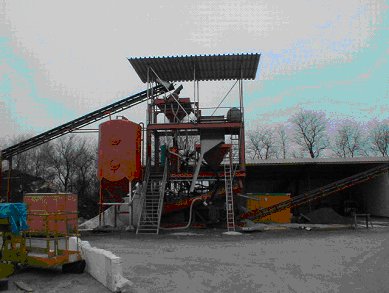
The plant is semimobile with closed watercercuit
2002 the original size machine mbb 2 was built to make sure to can layout the dimensions of a production plant by driving a lorry ( 12 – 24t ) of material through. The input comes into the upstream box from which the overflow, the light goods, flows to the bow screen to allow to rewin the heavy fines. The coarse lights goes to the overflow of the bow screen out, process water and heavy fines flows with its underflow to a medium step concentrator which is automatically controled by weight. If an adjusted weight in the concentrator is arrived, the underflow valve opens , the concentrated fine heavy good flows down to the screen. The weight control system checks automatically if there is overload. By the vibration the rest of the lights in the sorting hose will be forced to the surface and then it goes with the upstream water pulsation upwards back to the upstream box. The fine sand is rewon by a hydrocyclon and makes a heavy density slurry to make it possible that the lights can flow to the surface.
mbb 3
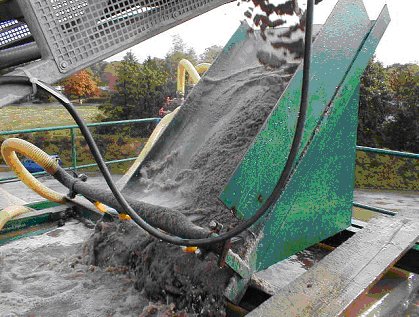
Input cute and wet upstream buffer
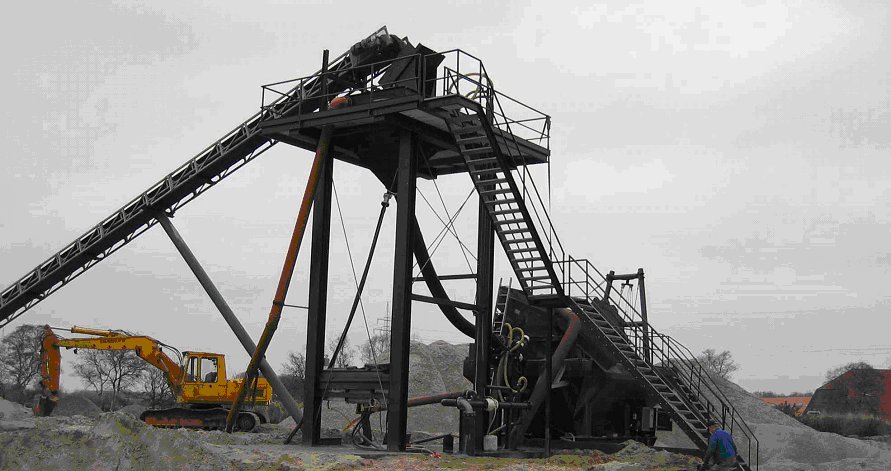
This machine Type VS 300 works since 27.9.2003 at Behrends Sandgruben in D – 26789 Leer, Eisinghausener Str. 185 and cleans 50 – 60 t/h 0-8 mm from organics (wood and coal), slime , clayclogs. Input with shovelloader, product output to the bucketwheel.
Energy and wear costs are drastically reduced. Energy consumption of the whole plant is 80 kW, including water pump, conveyor belts, bucketwheel and compressor. The lifetime of the first swinging hose before it had to be replaced, in mbb 3, was 5 years. During that period the throughput was ca. 500 000 t grains 0-8 mm. Wear costs for this machine are ca. 4 – 5 ct per t production. Specific energy per t production is 0,04 kwh for the agitator and 1,6 kwh/t for the whole plant.
mbb hosewashers / vertical jigs have been in operation since 2003. The lab test confirmed that within one week the mbb3 had achieved the quality required for construction material in spite of this pit having a lot of impurities.
Localisation of the plant : Adolf Behrends Sandgruben, Eisinghausener Straße 185, 26789 Leer Loga
mbb 10
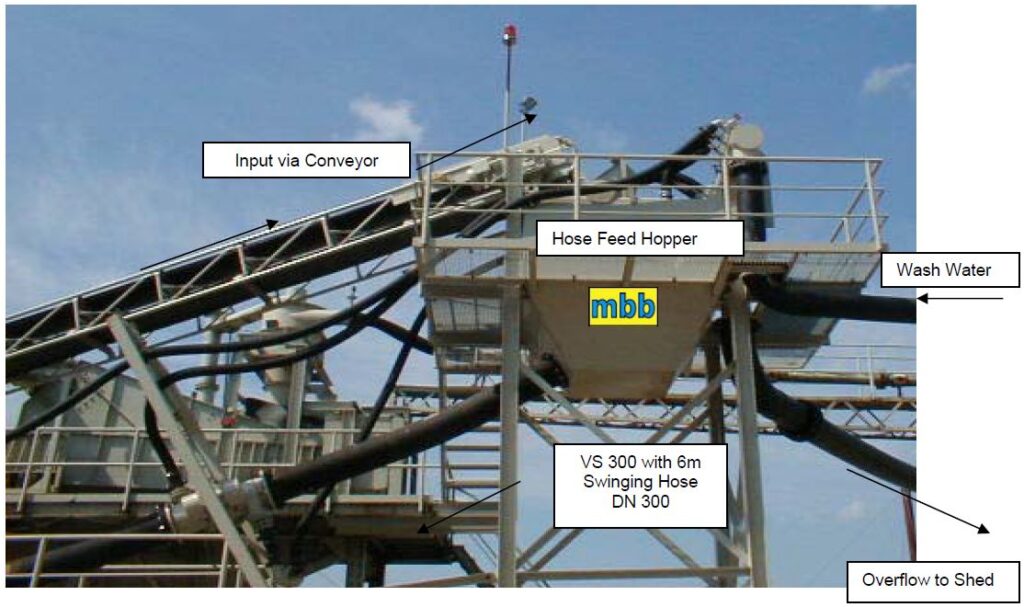
mbb 10 ( Size VS 300 ) was set in action on 11 th August 2006 in the sand plant Huneke in D-26802 Moormerland-Veenhusen, Uthuser Str. 2, Northern Germany. Task is separating Organics and slime out off concrete sand 0 – 2 a Product output is 50 – 65 t/h when Input has an organic content up to 5 %. The water pump has a capacity of 200 m³/h and the plant has a power consumtion of 75 kW included conveyor belts and dewatering sand screw.
mbb 12
